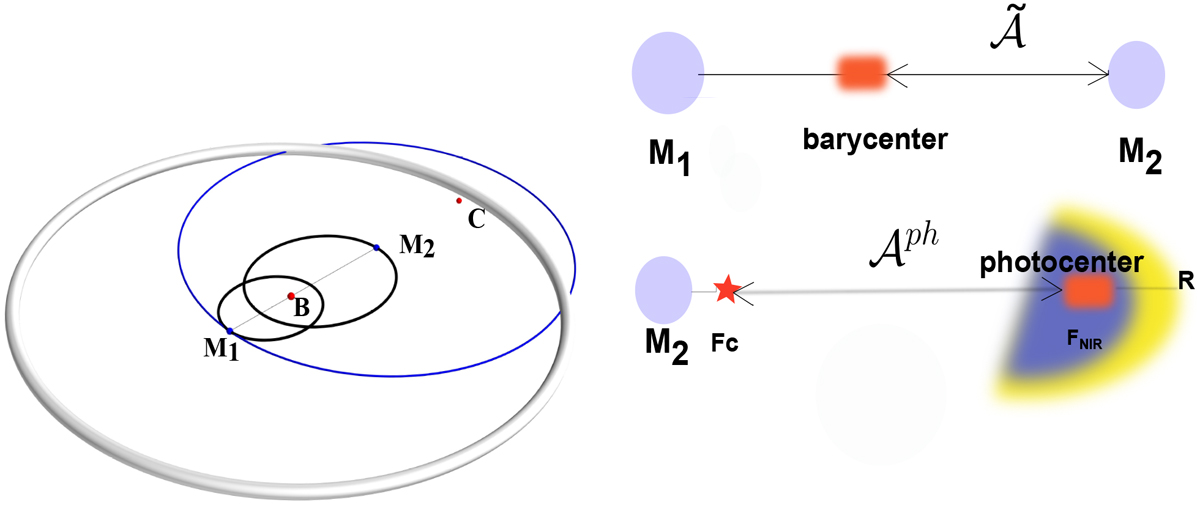Fig. 1

Download original image
Evolving model for the continuum hot dust emission of eCB-SMBH. Left: computer simulation snapshot illustrating the eCB-SMBH configuration at the time instance of pericentre passage. M1 and M2 are SMBH loci, black ellipses are their orbits, B is the barycentre of the system, the blue circle is the sublimation ring bound to the M2, the grey ring is the CBD, C is the centroid of the arc of the dust ring outside the CBD and the photo-centre of the continuum in GRAVITY’s K band. The masses of the SMBHs are M1 = 6 × 107 M⊙ and M2 = 4 × 107 M⊙, eCB-SMBH eccentricity is e = 0.5, and other orbital parameters are Ω1 = 0.1°, ω1 = 0.1°, Ω2 = 180.1°, and ω2 = 180.1°. See the main text for a description of the coordinate system. Right upper: schematic of the barycentric photo-centre displacement ![]() used in astrometry to detect a mass M2 gravitationally bound in a two-body system with mass M1. Bottom: nearby M2 originates optical continuum Fc, which is then reprocessed by a dusty torus (yellow circle) into NIR emission Fnir in the K band (2.2 μm), commonly known as ‘dust continuum’. Because the dust ring (yellow circle segment) and CBD (blue circle segment) intersect, the photo-centre will be the centroid of the arc of the dust ring (yellow circle). The distance between the highest point of the dust-ring arc and M2 is denoted by the symbol h.
used in astrometry to detect a mass M2 gravitationally bound in a two-body system with mass M1. Bottom: nearby M2 originates optical continuum Fc, which is then reprocessed by a dusty torus (yellow circle) into NIR emission Fnir in the K band (2.2 μm), commonly known as ‘dust continuum’. Because the dust ring (yellow circle segment) and CBD (blue circle segment) intersect, the photo-centre will be the centroid of the arc of the dust ring (yellow circle). The distance between the highest point of the dust-ring arc and M2 is denoted by the symbol h. ![]() is the angular displacement of the photo-centre with respect to M2.
is the angular displacement of the photo-centre with respect to M2.
Current usage metrics show cumulative count of Article Views (full-text article views including HTML views, PDF and ePub downloads, according to the available data) and Abstracts Views on Vision4Press platform.
Data correspond to usage on the plateform after 2015. The current usage metrics is available 48-96 hours after online publication and is updated daily on week days.
Initial download of the metrics may take a while.


